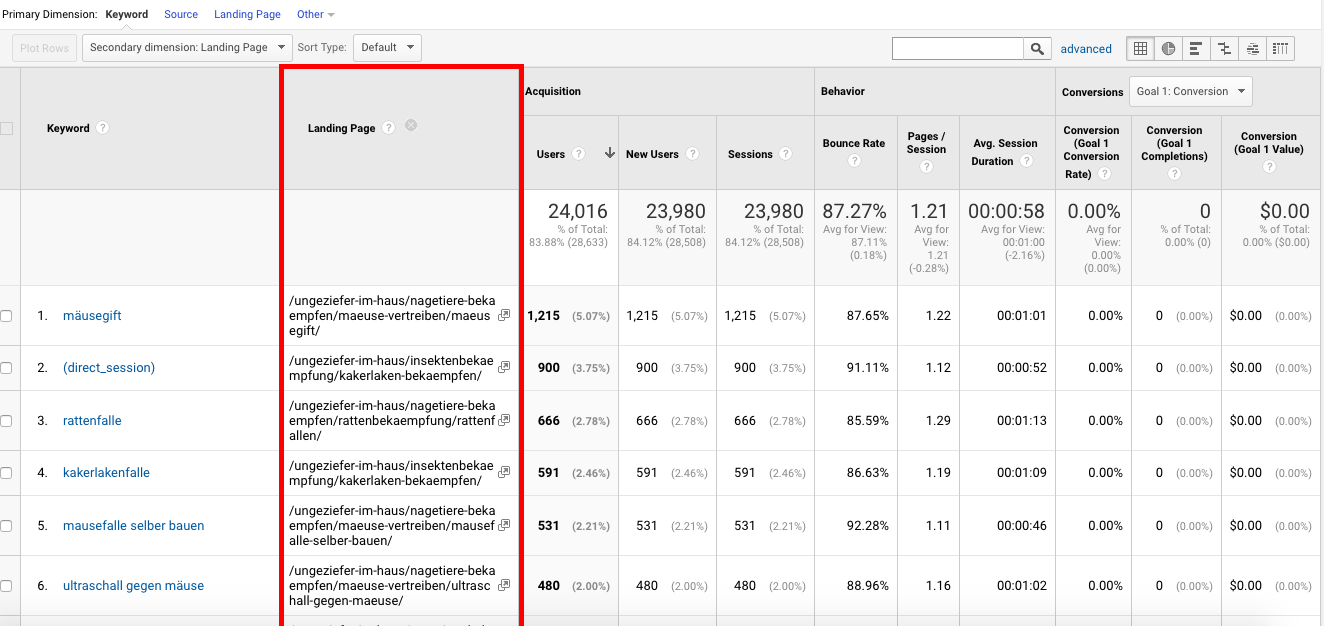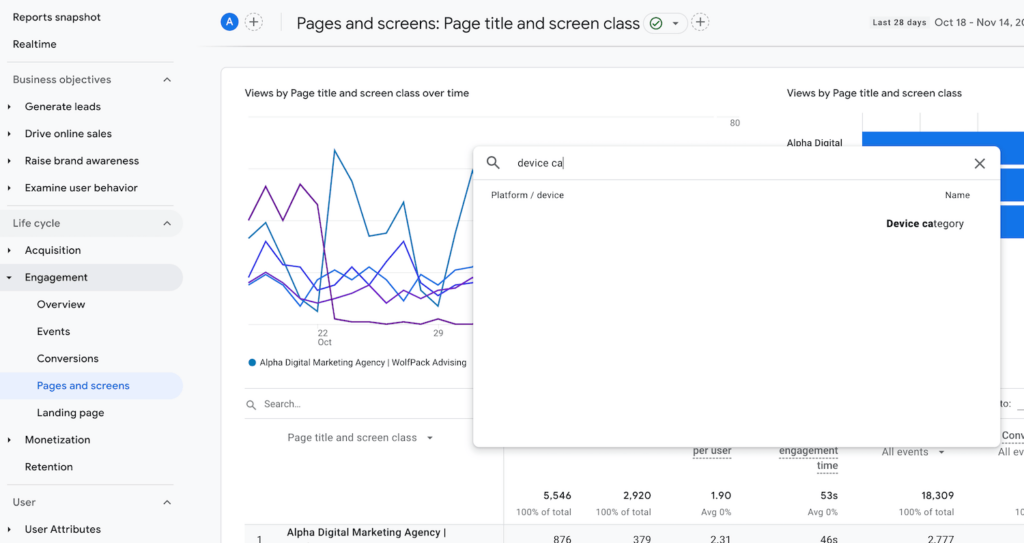A Comprehensive Guide to 'Secondary Dimensions' in Google Analytics: Insights Revealed
A Comprehensive Guide to 'Secondary Dimensions' in Google Analytics: Insights Revealed
Blog Article
Deciphering the Value of Secondary Dimension in Google Analytics: Everything About Its Relevance and Effect
In the realm of digital analytics, the usage of secondary measurements within Google Analytics functions as a crucial device for discerning much deeper layers of data insights. The value of second dimensions lies in their capability to give a nuanced sight of customer actions and interaction with an internet site or system. By studying information beyond surface-level metrics, companies can open a wide range of information that improves and shapes critical choices advertising efforts. This exploration right into the realm of additional dimensions not just supplies an extensive understanding of customer engagement however likewise loses light on the intricate characteristics that drive on-line performance.
Recognizing Secondary Measurements in Google Analytics
The understanding of secondary dimensions in Google Analytics is crucial for getting deeper insights into user habits and web site efficiency. While primary measurements provide essential data factors such as traffic resources and web page views, second dimensions permit an extra nuanced evaluation by giving extra context to these main metrics. By including additional measurements, individuals can segment and filter their data to reveal patterns and trends that might not be instantly apparent.

Revealing the Benefits of Second Dimensions
Structure upon the foundational understanding of second dimensions in Google Analytics, discovering the advantages they provide exposes important understandings for boosting data evaluation and decision-making. By incorporating secondary dimensions, customers can dive deeper right into their information, obtaining an extra extensive view of individual habits, material efficiency, and various other essential metrics.
Furthermore, second dimensions supply context to main data, providing extra layers of details that can aid in understanding individual communications and preferences. This improved understanding can direct tactical decision-making, causing more targeted advertising and marketing projects, internet site optimizations, and general improved performance. Fundamentally, secondary measurements work as a powerful tool for unlocking deeper insights and taking full advantage of the energy of Google Analytics for companies and internet site proprietors.
Leveraging Secondary Dimensions for Boosted Insights
By taking advantage of the power of second dimensions in Google Analytics, organizations can reveal much deeper understandings that drive notified strategic and decision-making optimization initiatives. Leveraging secondary dimensions enables organizations to dive beyond surface-level information and obtain a much more thorough understanding of customer behavior, target market demographics, traffic resources, and web site efficiency. For instance, by integrating key measurements like website traffic resources with second dimensions such as geographical place or gadget group, companies can identify which regions or devices are driving one of the most useful website traffic to their web site.
Furthermore, secondary dimensions enable companies to segment and evaluate data more successfully, aiding them determine fads, patterns, and chances that might have otherwise gone undetected. By utilizing additional dimensions, services can customize their advertising and marketing techniques, material, and user experience to far better fulfill the needs and preferences of their target audience. In essence, leveraging additional measurements in Google Analytics encourages companies to make data-driven decisions that result in boosted performance, boosted ROI, and sustainable growth.

Impact of Additional Measurements on Information Evaluation
Enhancing data analysis via the usage of second dimensions in Google Analytics offers businesses with a much deeper understanding of their on the internet performance metrics. By including second dimensions, such as time of day, geographic area, or gadget category, companies can discover useful insights that may have been neglected with main measurements alone. This improved level of granularity permits more accurate segmentation of data, making it possible for organizations to identify patterns, fads, and correlations that can drive tactical decision-making.

Optimizing Possible: Additional Dimensions Techniques
The strategic application of second measurements in Google Analytics extends beyond boosting data analysis; it involves crafting targeted techniques to open the full possibility of useful understandings for company growth. By using secondary measurements efficiently, businesses can dive deeper into their web site traffic, user behavior, and advertising projects to remove actionable insights. One key technique is to incorporate second measurements with key official source dimensions to obtain a comprehensive sight of user interactions. For example, coupling the main dimension of 'source/medium' with additional dimensions like 'landing page' or 'gadget category' can expose which networks are driving website traffic to certain pages or exactly how individual actions differs across devices.
Furthermore, using secondary dimensions to segment data based upon individual demographics, habits, or technology can assist services customize their advertising and marketing initiatives to certain audience segments. This targeted strategy can cause boosted conversion prices, boosted customer experiences, and eventually, increased ROI. By taking full advantage of the capacity of additional dimensions in Google Analytics, businesses can make informed decisions, maximize their on the internet visibility, and drive lasting development.
Conclusion
In final thought, secondary site measurements in Google Analytics play a crucial function in providing much deeper insights and boosting data evaluation. By making use of additional dimensions properly, companies can gain an extra thorough understanding of customer actions and site efficiency. Incorporating second dimensions right into information analysis methods can lead to even more enlightened decision-making and boosted total performance. It is crucial for services to take advantage of the power of secondary dimensions to maximize their possible and achieve greater success in their on the internet ventures (what is a “secondary dimension” in google analytics?).
While main dimensions provide basic information points such as web traffic sources and web page sights, additional dimensions allow for an extra nuanced evaluation by offering extra context to these main metrics. By incorporating primary dimensions like web traffic resources with second dimensions such as geographical area or gadget classification, services can determine which tools or regions are driving the most useful web traffic to their website.
By integrating additional dimensions, such as time of day, geographical place, or gadget group, businesses can reveal valuable insights that may have been neglected with key measurements alone. One vital technique is to combine second measurements with main measurements to get a thorough view of customer interactions. Pairing the primary dimension of 'source/medium' with additional dimensions like 'touchdown page' or 'gadget classification' can expose which channels are driving website traffic dig this to details web pages or just how user actions differs across tools.
Report this page